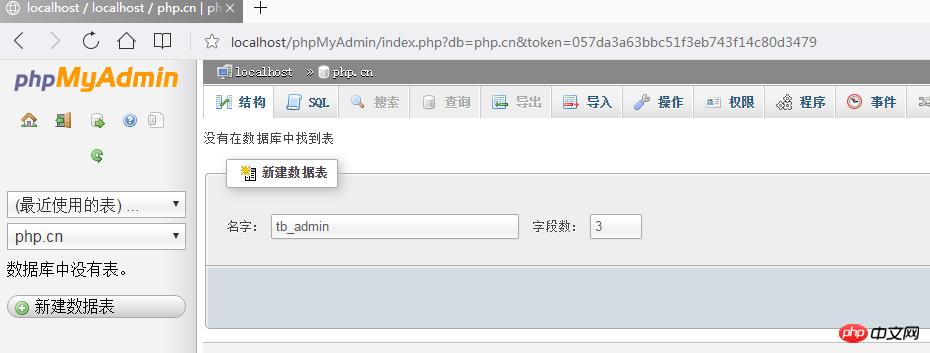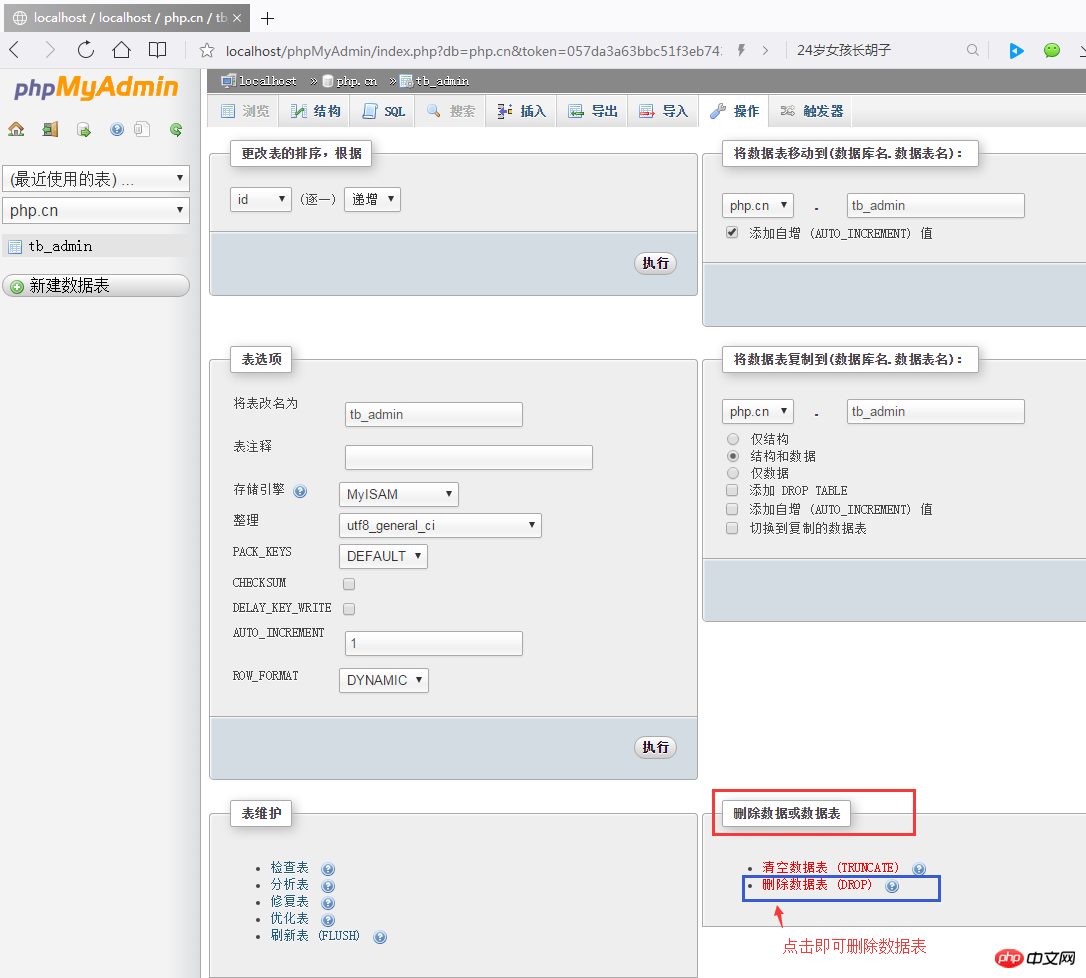
Detailed graphic and text explanation of data table addition, deletion and modification operations (phpMyAdmin usage tutorial 2)
The operation of data table is based on selecting the specified database, and then Create and manage data tables in this database. Below we will introduce in detail how to create, modify and delete data tables!
In the previous article " Detailed graphic explanation of database addition, deletion and modification operations (phpMyAdmin usage tutorial 1)", the creation of data tables was also briefly mentioned, but it was just briefly mentioned, There is no in-depth introduction, so in this article we will introduce the operation data table in detail.
1. Create a data table
Let’s use the user’s account as an example to introduce the creation method of the data table in detail.
After creating the php.cn database, click on the php.cn database, enter the name of the data table and the number of fields in the text box under "New Data Table", and then click the "Execute" button to create Data table, as shown below:

After the data table is successfully created, the interface of the data table structure will be displayed. Enter the detailed information of each field in the form of this interface, including Field name, data type, length/value, encoding format, whether it is empty and primary key, etc., to complete the detailed settings of the table structure. After all the information is filled in, click "Save" to create the data table structure. , as shown in the picture below,

Tips:
After clicking the "Save" button , click "Data Table Name" to display the data table structure in horizontal format, making it easy to edit the structure!
2. Modify the data table
After creating a new data table, enter the data table structure page, here Tables can be modified by changing the structure of the data table. You can perform operations such as adding columns, deleting columns, indexing columns, modifying the data type of columns or the length/value of fields, as shown below:

##3 .Delete a data table
Deleting a data table is similar to that of a database. Click the data table to enter the data table structure page. There is an "operation button" in the upper right corner. Click to enter the operation page. In this The page can sort and modify the table, move the table to other databases, modify table options, and maintain the table. There is a "Delete data or data table" in the lower right corner. Click "Delete data table" to delete the data. Showed! As shown below:
Detailed graphic and text explanation of using SQL statements to operate data tables (phpMyAdmin usage tutorial 3)"!
【Related recommendations】1. Relevant topic recommendations: "2. Related video courses Recommended: "3. Online download of related tools: "The above is the detailed content of Detailed graphic explanation of data table addition, deletion and modification operations (phpMyAdmin usage tutorial 2). For more information, please follow other related articles on the PHP Chinese website!
 Commonly used mysql management tools
Commonly used mysql management tools
 What to do if phpmyadmin fails to import sql file
What to do if phpmyadmin fails to import sql file
 How to change phpmyadmin to Chinese
How to change phpmyadmin to Chinese
 What's going on when phpmyadmin can't access it?
What's going on when phpmyadmin can't access it?
 Reasons why mobile phone touch screen fails
Reasons why mobile phone touch screen fails
 How to use the print function in python
How to use the print function in python
 edge browser compatibility settings
edge browser compatibility settings
 How do PR subtitles appear word for word?
How do PR subtitles appear word for word?
 How do mysql and redis ensure double-write consistency?
How do mysql and redis ensure double-write consistency?




